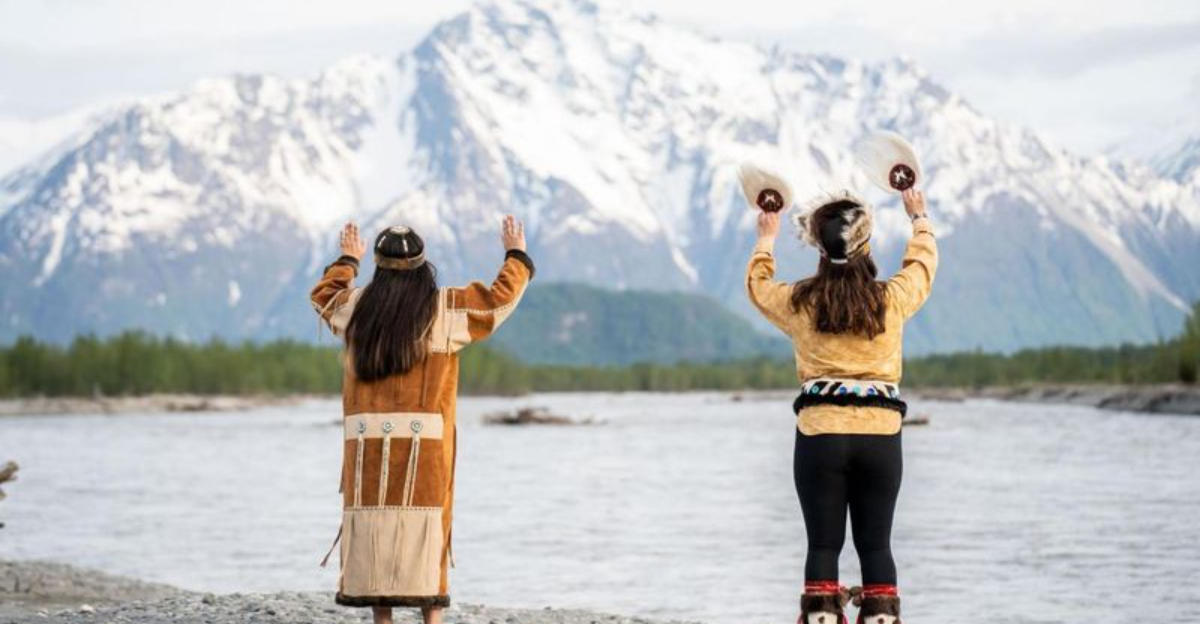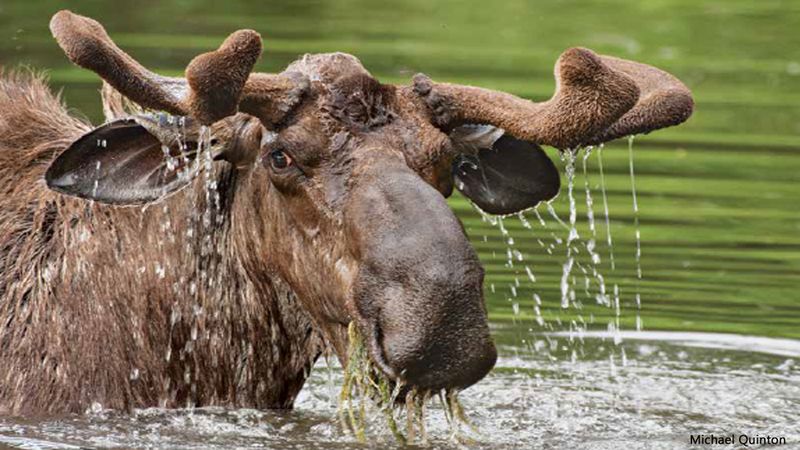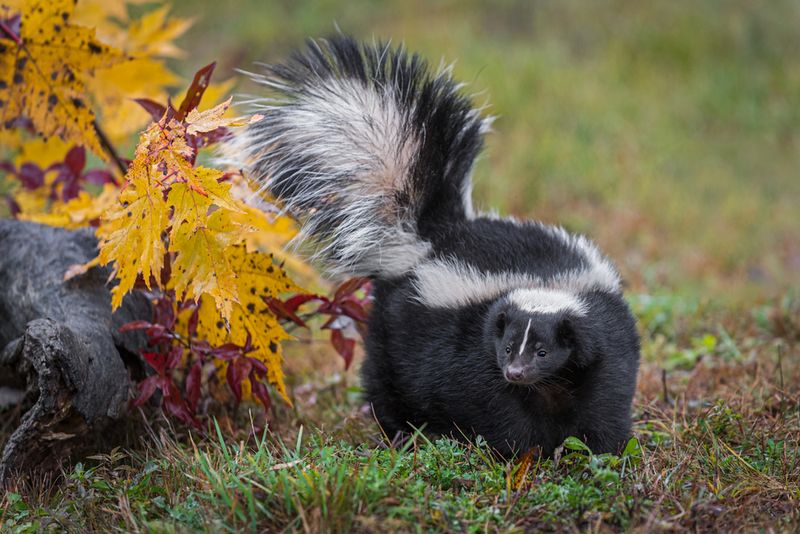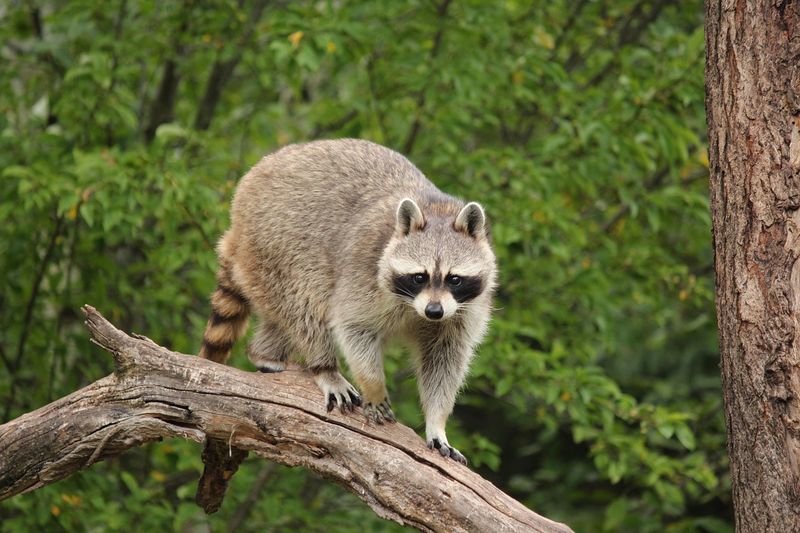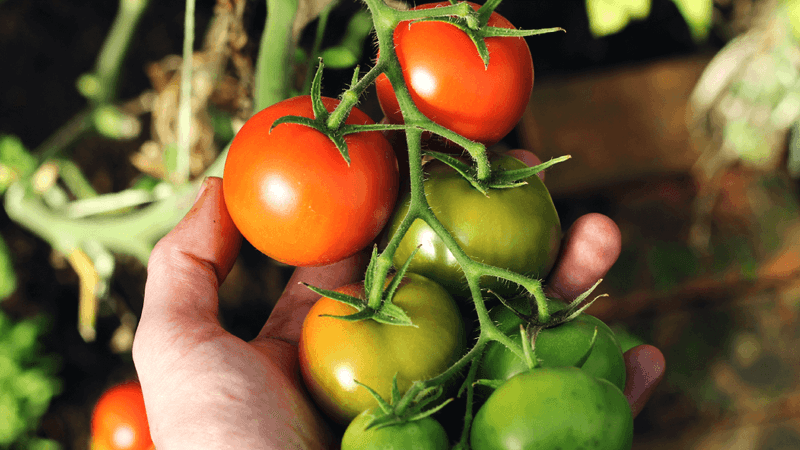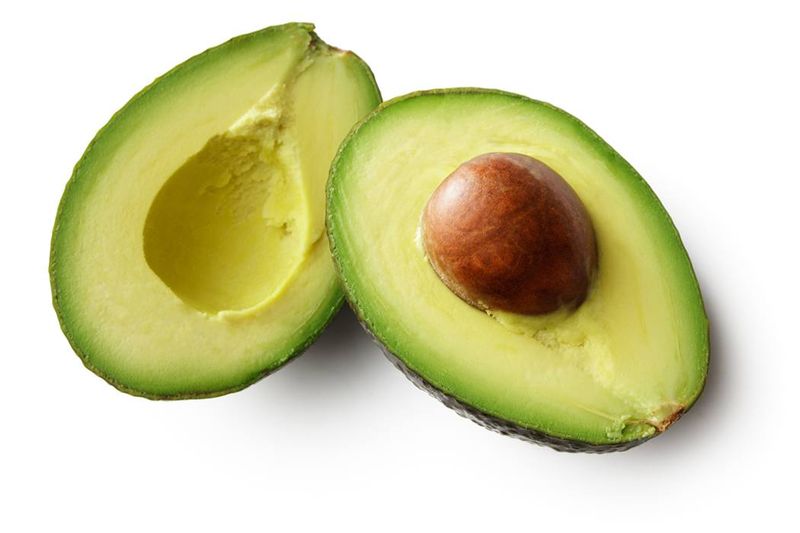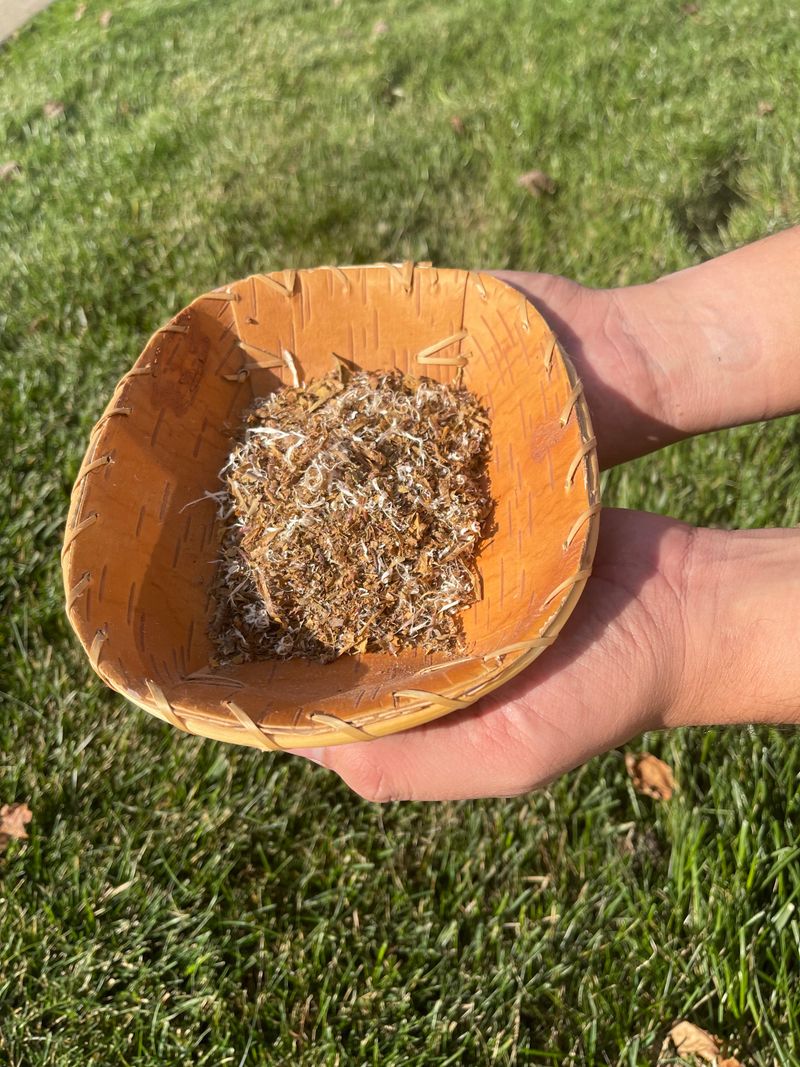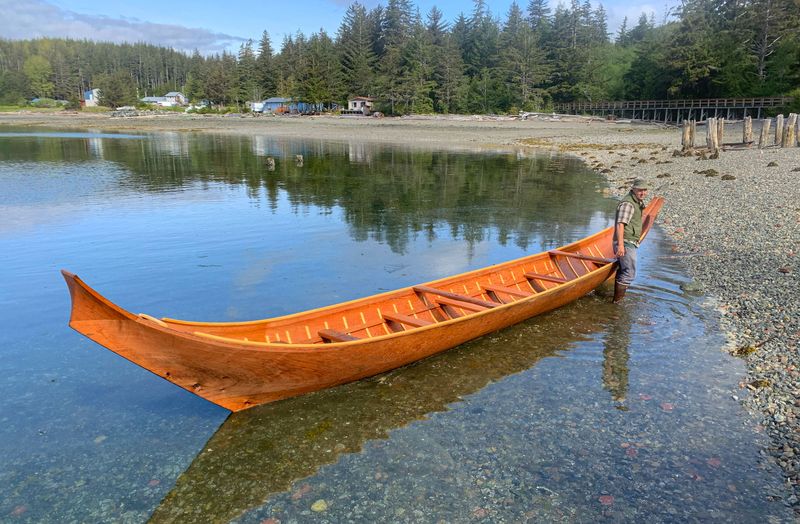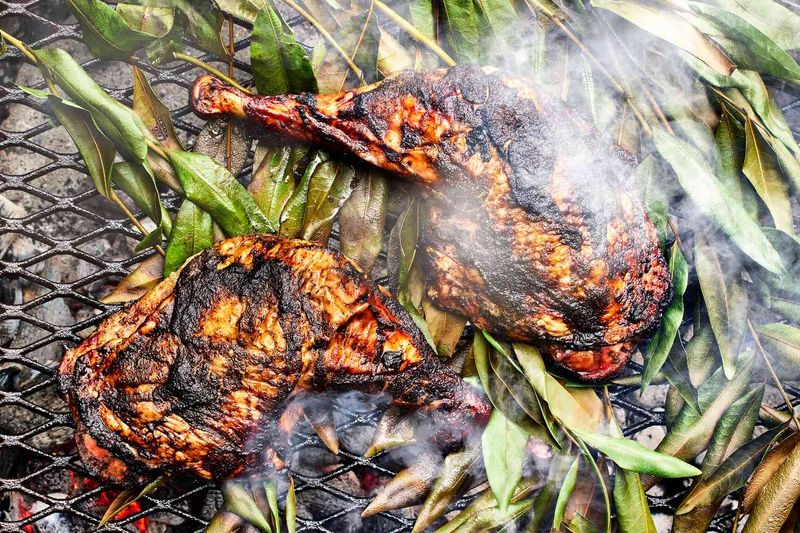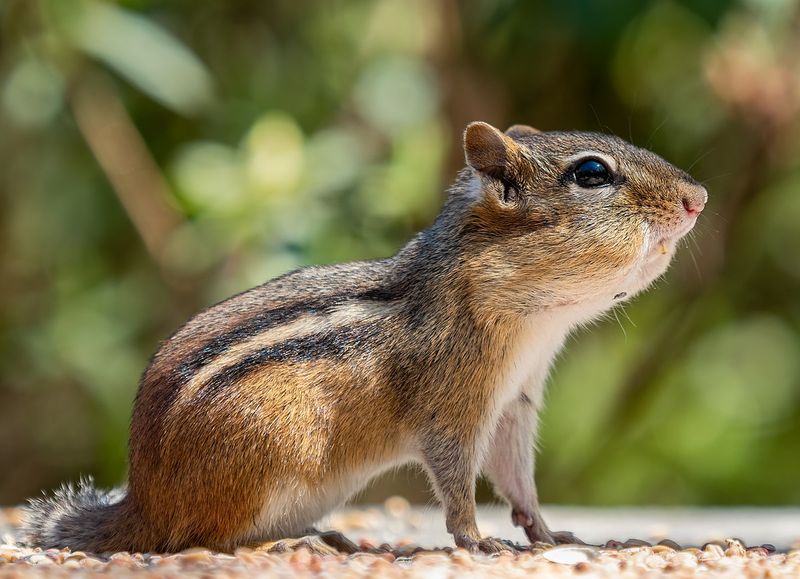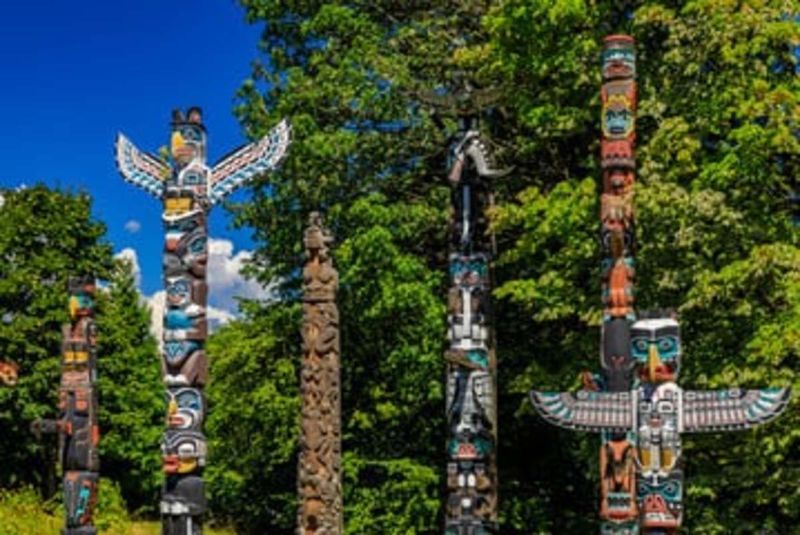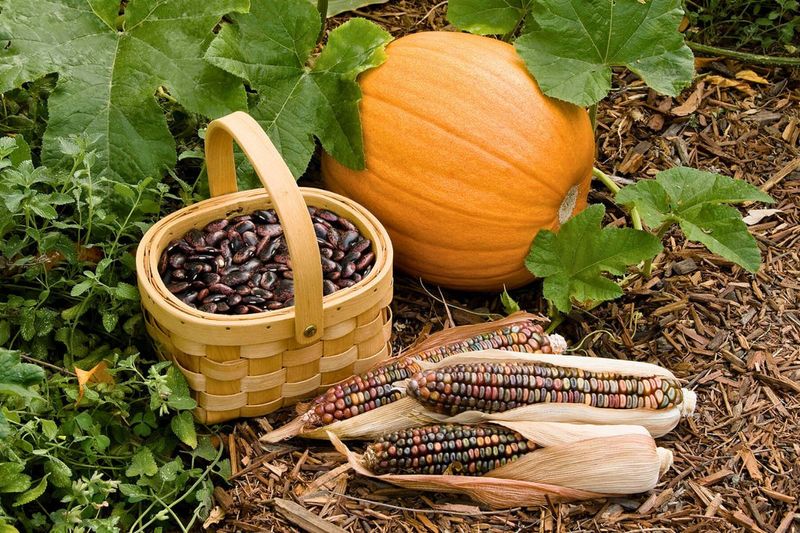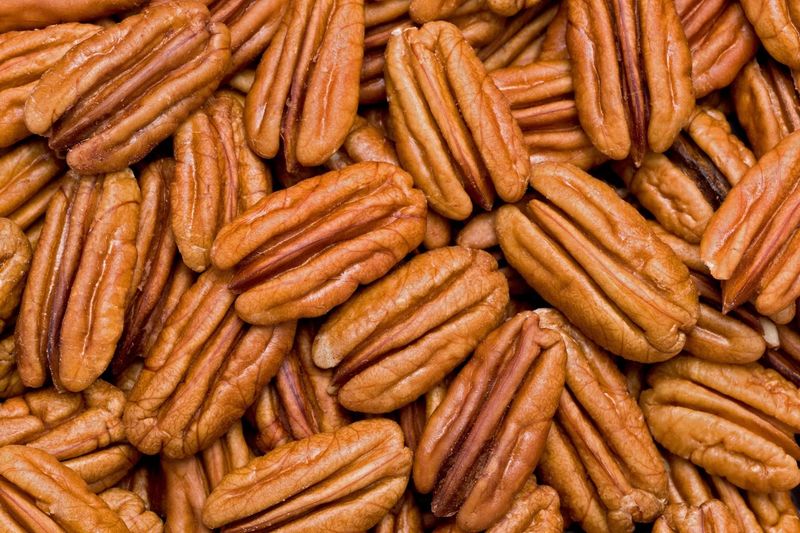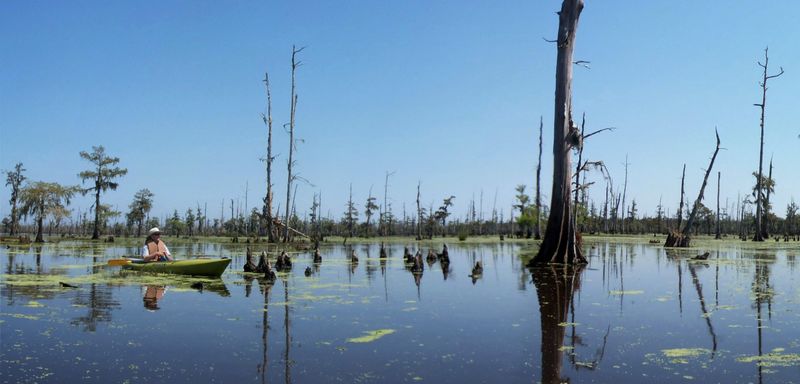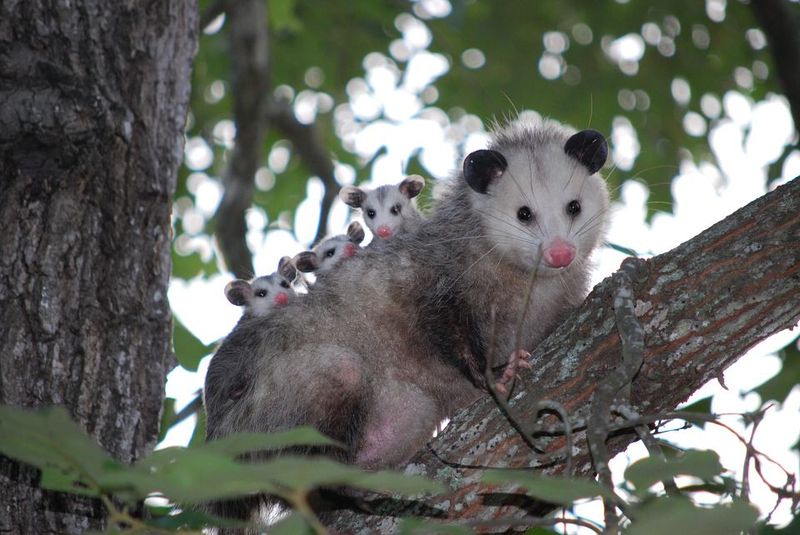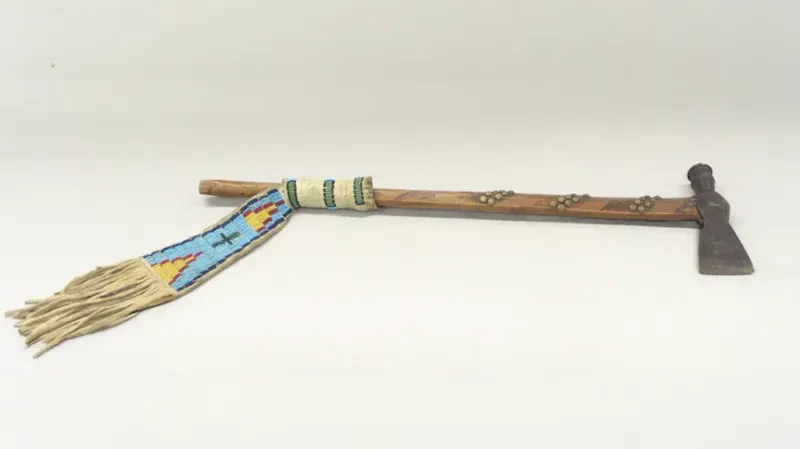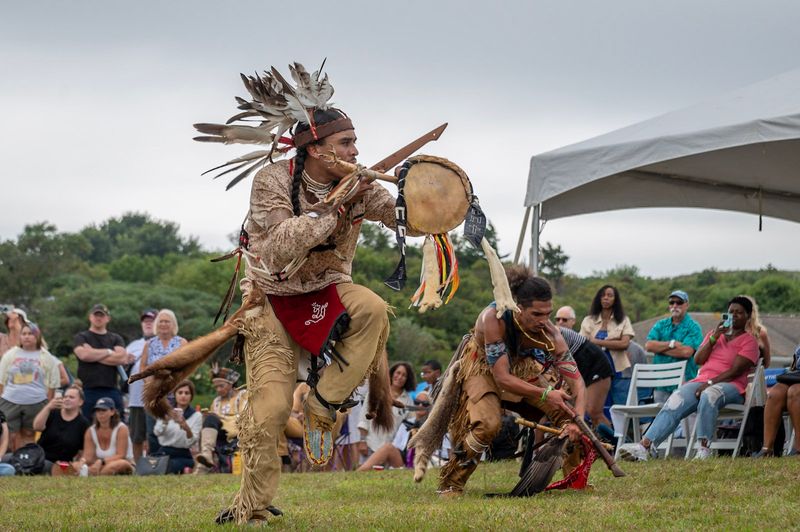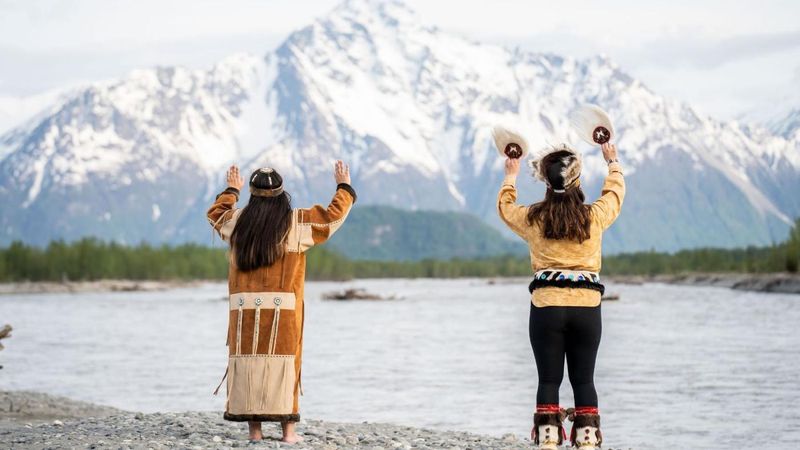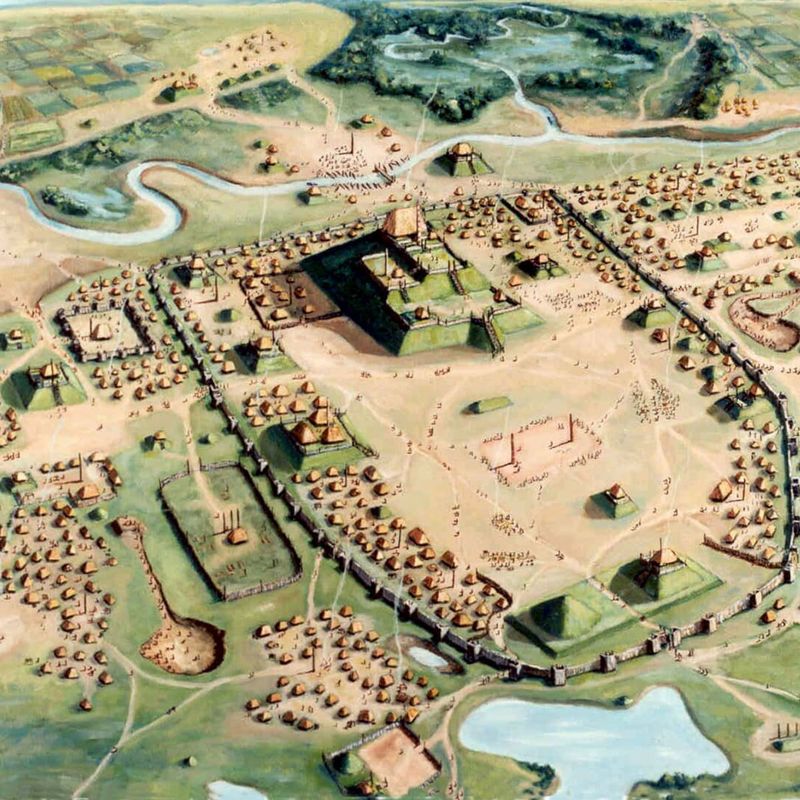Ever wonder where words like ‘skunk’ or ‘barbecue’ come from? Many everyday English words actually originated from Native American languages.
These linguistic gifts reflect the rich cultural exchange between indigenous peoples and European settlers in North America.
The words span everything from animals and foods to geographical features and cultural practices.
1. Moose: The Bark-Stripping Giant
Derived from the Eastern Algonquian word ‘moos,’ meaning ‘he strips off,’ this massive mammal earned its name from its habit of peeling bark from trees. Standing up to six feet tall at the shoulder, these magnificent creatures roam the northern forests of North America.
Male moose grow impressive antlers that can span six feet across, shedding and regrowing them annually. Their distinctive appearance with long legs, drooping snouts, and shoulder humps makes them unmistakable in the wild.
Interestingly, the plural of moose remains ‘moose’ – no extra ‘s’ needed!
2. Skunk: Nature’s Warning System
From the Algonquian ‘seganku’ or ‘skonks,’ these black-and-white mammals possess one of nature’s most effective defense mechanisms. When threatened, skunks can spray a potent, foul-smelling liquid that can reach up to 10 feet away!
Most predators quickly learn to recognize their distinctive warning coloration and steer clear. Despite their fearsome reputation, skunks are generally peaceful creatures, preferring to forage for insects, fruits, and small animals rather than cause trouble.
Tomato juice, contrary to popular belief, doesn’t actually neutralize skunk odor – special solutions containing hydrogen peroxide work better.
3. Raccoon: The Masked Bandit
The name ‘raccoon’ comes from the Powhatan word ‘aroughcun,’ meaning ‘animal that scratches with its hands.’ These clever creatures are instantly recognizable by their black mask-like facial markings and ringed tails.
Raccoons possess remarkably dexterous front paws with five fingers each, allowing them to open containers, untie knots, and even turn doorknobs! Their habit of washing food before eating has earned them the nickname ‘washing bears’ in some languages.
Urban raccoons have shown problem-solving abilities comparable to primates, adapting brilliantly to city life.
4. Tomato: From Poison Suspicion to Culinary Star
The word ‘tomato’ originates from the Nahuatl (Aztec) word ‘tomatl.’ When Europeans first encountered this bright red fruit in the Americas, many believed it to be poisonous due to its relationship to deadly nightshade plants.
Today, this Native American gift to global cuisine forms the foundation of countless dishes worldwide. From Italian pasta sauces to Mexican salsas, tomatoes have become essential in kitchens across continents.
Botanically speaking, tomatoes are technically fruits, though they’re typically used as vegetables in cooking – a culinary identity crisis that continues to this day!
5. Avocado: The Fertility Fruit
From the Nahuatl word ‘ahuacatl,’ meaning ‘testicle,’ avocados earned their name from their shape and were considered symbols of fertility by the Aztecs. This creamy green fruit has become a modern superfood, packed with healthy fats and nutrients.
California produces about 90% of U.S. avocados, though the fruit originated in south-central Mexico around 10,000 years ago. Ancient civilizations treasured avocados so highly that kings and nobles were often buried with them.
A single avocado tree can produce up to 500 fruits annually and can live for centuries!
6. Tobacco: Sacred Plant Turned Global Industry
The word ‘tobacco’ derives from the Arawakan ‘tabako,’ referring to a type of roll used for smoking. Native Americans used tobacco in religious ceremonies long before European contact, considering it a sacred plant with medicinal and spiritual properties.
When European explorers encountered tobacco, they quickly became fascinated with its effects. By the 1600s, tobacco had become a valuable cash crop and global trade commodity, fundamentally altering economic systems.
Despite its controversial health impacts today, tobacco remains culturally significant to many Native American tribes who continue traditional ceremonial uses.
7. Canoe: The Vessel That Shaped Exploration
The word ‘canoe’ comes from the Arawakan ‘canoa,’ describing the narrow, lightweight boats that indigenous peoples used for transportation along waterways. These elegant vessels were typically made by hollowing out large logs or by stretching animal skins or bark over wooden frames.
European explorers quickly adopted canoes for their own expeditions, finding them perfectly suited to navigating North America’s extensive river systems. The fur trade, which shaped early colonial economies, relied heavily on canoe transportation.
Modern recreational canoes still follow many of the same design principles developed by Native Americans centuries ago.
8. Barbecue: From Ancient Cooking Technique to Backyard Tradition
The term ‘barbecue’ originates from the Taíno word ‘barbacoa,’ referring to a wooden framework used for cooking meat over an open fire. This cooking method allowed indigenous peoples to slow-cook and preserve meat in the days before refrigeration.
Spanish explorers observed this technique in the Caribbean and brought it back to Europe, from where it spread globally. Today, barbecue traditions vary widely across regions, from Texas brisket to Korean bulgogi.
Despite these variations, the fundamental technique remains remarkably similar to the original Native American method: cooking food slowly over indirect heat and smoke.
9. Chipmunk: The Headfirst Tree Descender
The name ‘chipmunk’ likely comes from the Ojibwe word ‘ajidamoo,’ meaning ‘one who descends trees headfirst.’ These small, striped rodents are known for their acrobatic abilities and distinctive cheek pouches used for carrying food.
A single chipmunk can gather up to 165 acorns in a day, storing them in underground burrows that can extend up to 30 feet in length! Their complex tunnel systems include separate chambers for sleeping, storing food, and even bathroom areas.
Eastern chipmunks hibernate during winter but wake periodically to snack on their stored food supplies – nature’s perfect example of planning ahead.
10. Totem: Sacred Family Symbols
The word ‘totem’ comes from the Ojibwe term ‘odoodem,’ meaning ‘his kinship group or family symbol.’ These carved wooden poles featuring animals and spirits represented clan identities and told stories of ancestry, achievements, and important events.
Contrary to popular belief, totem poles weren’t worshipped as gods but served as historical records and markers of social status. The figures carved into totem poles often represent family crests, with specific animals symbolizing different clans.
The tallest traditional totem pole stands at 173 feet in Kake, Alaska, carved from a single tree!
11. Squash: The Three Sisters’ Vital Member
The word ‘squash’ derives from the Narragansett term ‘askutasquash,’ meaning ‘eaten raw or uncooked.’ This versatile vegetable was one of the ‘Three Sisters’ – along with corn and beans – that formed the agricultural foundation of many Native American societies.
Archaeological evidence suggests squash cultivation began around 10,000 years ago in Mexico, making it one of the oldest known crops. The Three Sisters planting method was ingeniously sustainable: corn provided stalks for beans to climb, beans fixed nitrogen in soil, and squash leaves suppressed weeds.
Today, there are over 100 varieties of squash grown worldwide!
12. Pecan: The Stone-Cracking Nut
The name ‘pecan’ comes from the Algonquian word ‘pakan,’ meaning ‘nut requiring a stone to crack.’ These delicious nuts grow on trees that can live up to 300 years and reach heights of 150 feet – true giants of the forest!
Native Americans not only ate pecans but also used them to make a fermented drink called ‘powcohicora.’ The trees themselves hold cultural significance, with some tribes believing they represented strength and longevity.
Thomas Jefferson was so fond of pecans that he planted them at Monticello, helping to popularize this native nut among European settlers.
13. Hickory: The Bow-Making Wood
The term ‘hickory’ comes from the Powhatan word ‘pohickory,’ referring to a type of nut or tree. These strong, resilient trees provided Native Americans with valuable wood for tools, bows, and structures, while their nuts offered nutritious food.
Hickory wood is renowned for its combination of strength, toughness, and flexibility – qualities that made it perfect for crafting bows that could propel arrows with tremendous force. Many tribes also extracted a sweet syrup from hickory trees, similar to maple syrup.
Today, hickory remains prized for smoking meats and crafting baseball bats and golf club shafts.
14. Bayou: The Mysterious Waterways
The word ‘bayou’ derives from the Choctaw term ‘bayuk,’ meaning ‘small stream.’ These slow-moving, marshy waterways are most associated with the Gulf Coast region, particularly Louisiana, where they form intricate networks through swamplands.
Bayous served as natural highways for indigenous peoples, who navigated them in dugout canoes to access fishing grounds, hunting areas, and neighboring communities. The rich ecosystems of bayous provided abundant food resources, including fish, shellfish, and waterfowl.
Today, bayous remain vital habitats for diverse wildlife and hold cultural significance in Cajun and Creole traditions.
15. Opossum: The White Beast
The name ‘opossum’ comes from the Powhatan word ‘apasum,’ meaning ‘white beast.’ These marsupials are North America’s only native pouched mammals, carrying their young in a pouch like their Australian kangaroo cousins.
Opossums are famous for their unique defense mechanism of ‘playing dead’ when threatened – an involuntary response triggered by extreme fear. They’re also remarkably resistant to rabies and can eat thousands of ticks per season, making them beneficial neighbors.
With 50 teeth (more than any other North American land mammal), opossums can look fierce but are actually gentle creatures that rarely bite.
16. Tomahawk: The Versatile Tool-Weapon
The word ‘tomahawk’ derives from the Algonquian term ‘tamahaac,’ referring to a type of axe that served as both tool and weapon. Original tomahawks featured stone heads attached to wooden handles, though metal versions emerged after European contact.
Beyond combat, tomahawks were used for everyday tasks like chopping wood, hunting, and food preparation. They also held ceremonial significance, with elaborately decorated peace tomahawks exchanged as diplomatic gifts between tribes and with European settlers.
Throwing tomahawks for sport or hunting was a skill that required considerable practice and precision.
17. Powwow: The Gathering of Nations
The term ‘powwow’ comes from the Narragansett phrase ‘pau wau,’ originally referring to spiritual leaders or healers. Today, powwows are vibrant cultural celebrations where Native Americans gather to honor traditions through dance, music, regalia, and community fellowship.
Traditional powwow drums represent the heartbeat of Mother Earth, with songs carrying prayers and stories across generations. Different dance styles showcase distinct regalia and movements, each with specific cultural meanings and origins.
Modern powwows welcome visitors from all backgrounds, serving as both cultural preservation and educational opportunities for wider understanding of Native traditions.
18. Alaska: The Great Land
The name ‘Alaska’ derives from the Aleut word ‘alaxsxaq,’ meaning ‘mainland’ or ‘the object toward which the action of the sea is directed.’ This vast northern territory became the 49th U.S. state in 1959, though its indigenous peoples had thrived there for thousands of years.
The Aleut people developed sophisticated hunting techniques and watercraft to survive in the challenging coastal environment. Their seaworthy kayaks, made from animal skins stretched over wooden frames, allowed them to hunt sea mammals in rough waters.
Alaska remains home to 229 federally recognized tribes, each with distinct languages and cultural traditions.
19. Chicago: Wild Garlic Country
The name ‘Chicago’ comes from the Miami-Illinois word ‘shikaakwa,’ meaning ‘wild garlic,’ referring to the wild onions and garlic plants that grew abundantly in the area. This major American city sits on land once inhabited by several tribes, including the Potawatomi, Miami, and Illinois.
The location was strategically important because it connected the Great Lakes water system to the Mississippi River watershed. Native Americans recognized this geographical advantage long before European settlers arrived.
The Chicago River’s flow was famously engineered to reverse direction in 1900, an engineering feat that symbolizes how thoroughly the natural landscape has been transformed.
20. Mississippi: The Great River
The name ‘Mississippi’ comes from the Ojibwe phrase ‘misi-ziibi,’ meaning ‘great river.’ This mighty waterway, stretching over 2,300 miles, served as a crucial transportation route and life source for numerous Native American tribes long before European exploration.
The river basin’s fertile soil supported advanced agricultural societies, including the Mississippian culture known for building impressive earthen mounds. At Cahokia in present-day Illinois, these ancient engineers constructed a city that housed up to 20,000 people around 1200 CE.
Today, the Mississippi remains a vital shipping channel and cultural icon in American literature and music.
